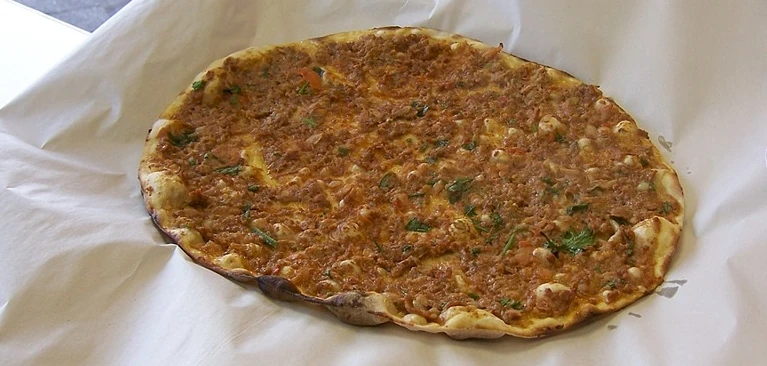Lahmacun: The Story and Preparation of a Legendary Flatbread
Often called “Turkish pizza,” lahmacun is a dish you’ll spot in nearly every eatery in Northern Cyprus.
Its simplicity, affordability, and nutritious qualities have earned it a devoted following, not only in Turkey but also across neighboring countries. However, its Turkish origins are a matter of debate, with Lebanese and Armenian communities also claiming it as their own. Interestingly, both the Turkish term lahmacun and the Armenian lamadjo derive from an Arabic phrase meaning “meat with dough.”
- Lahmacun in Northern Cyprus
- The Origins of Lahmacun
- How to Eat Lahmacun
- Making Lahmacun at Home
- Where to Find Lahmacun in Northern Cyprus
- Frequently Asked Questions About Food in Northern Cyprus

Lahmacun in Northern Cyprus
Lahmacun is among the most popular fast-food dishes in Turkey, and naturally, its appeal extends to Northern Cyprus, where Turkish culinary influences are strong. The version commonly found here traces its roots to eastern Turkey.
The dish features a thin, crispy base topped with a flavorful mix of minced lamb or beef, finely chopped onions, garlic, parsley, peppers, and tomatoes. This combination makes lahmacun one of the healthiest fast-food options in the world. Known colloquially as “Turkish pizza,” it stands out for its fresh ingredients and a medley of spices like paprika and crushed red pepper flakes.
The Origins of Lahmacun
The exact origin of lahmacun remains unclear, though it’s widely believed to have originated in either Turkey or Armenia. Despite its long history, dating back thousands of years, it only gained widespread popularity in recent decades.
Before becoming a Turkish staple in the 1950s, it was already enjoyed in Arab countries and southern Turkish regions, particularly Şanlıurfa and Gaziantep.
Different regions have their own takes on lahmacun, each with a distinct flavor profile and loyal fan base. Beyond Turkey, it is also beloved in Armenia, Lebanon, and Syria.
Fun Fact: When Armenian restaurants in Russia began serving lahmacun, it sparked protests among Turks. Similarly, Turkish social media users expressed outrage when Kim Kardashian, an American of Armenian descent, referred to lahmacun as “Armenian pizza.”
How to Eat Lahmacun
Traditionally, lahmacun is served with leafy greens, sometimes accompanied by sliced tomatoes and onions. The toppings are sprinkled with lemon juice, rolled up, and eaten like a wrap.
It’s often paired with ayran—a refreshing yogurt-based drink—or şalgam, a tangy, spicy beverage made from fermented red carrots.
Making Lahmacun at Home
Whether you use store-bought dough or make your own, the key is to roll the dough very thin for a crispy edge.
For the topping, mix minced lamb or beef with sweet red peppers, shallots, garlic, tomato paste, fresh herbs, and a blend of spices—adjusting the flavors to suit your taste.
Spread the meat mixture thinly over the dough, ensuring it’s evenly distributed. Bake for 5–7 minutes, just long enough for the topping to cook and the edges to crisp.
No oven? No problem. You can cook lahmacun on a stove top using a large non-stick pan for a similar result.
Where to Find Lahmacun in Northern Cyprus
The short answer: everywhere! Specifically, anywhere that serves Turkish food. You won’t find it in niche restaurants specializing in Italian or Russian cuisine, but it’s a staple at Turkish eateries—from popular chains like Ezic to small, unassuming cafés in remote villages.
Frequently Asked Questions About Food in Northern Cyprus
What other dough-based dishes should I try in Northern Cyprus?
Don’t miss gözleme, thin flatbreads with a variety of fillings. Although less common than lahmacun, they’re equally delicious. Check out our guide to finding the best gözleme in Northern Cyprus.
Where can I find the best restaurants in Northern Cyprus?
We surveyed readers and compiled two comprehensive lists:
Are there any uniquely Cypriot dishes?
The island’s most iconic specialty is halloumi cheese, a globally recognized and geographically protected product. Other local delicacies include pickled walnuts, carob (known as “keçiboynuzu”), and edible prickly pear cactus fruits.
Follow us on Instagram for more culinary inspiration and insights about Northern Cyprus!

